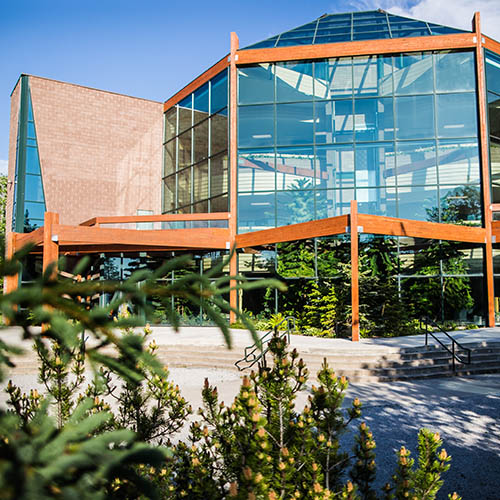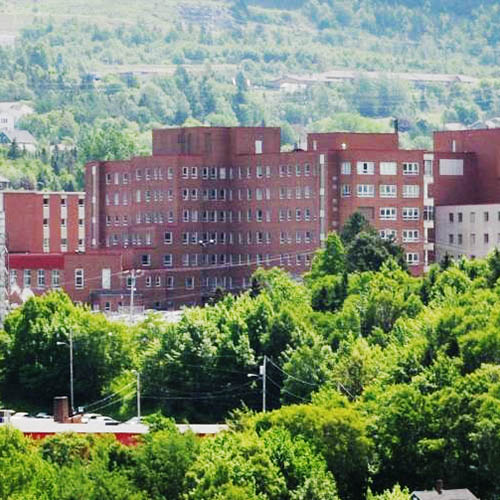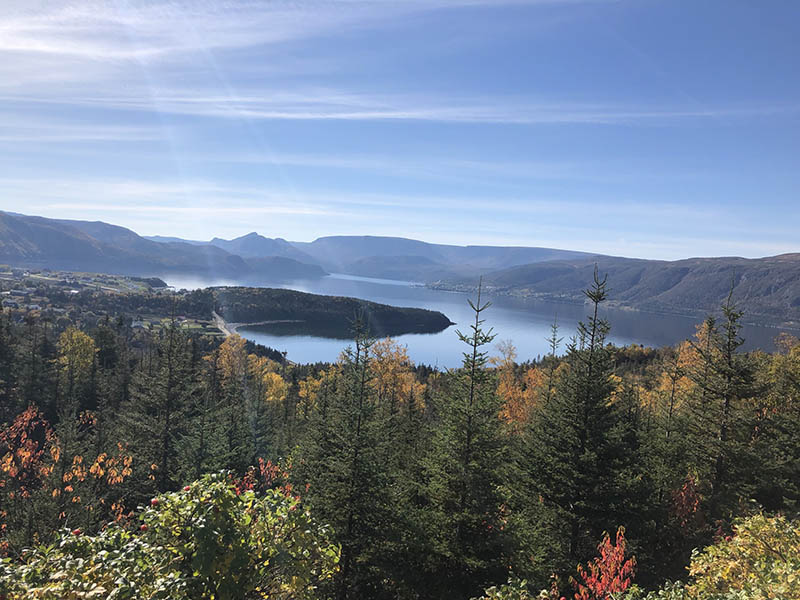Research Report: 2021
▼ Choose a report:

Powered by Research & Graduate Studies

Powered by Arts and Social Science

Powered by Fine Arts

Powered by Science and the Environment


The Board of Directors of the Friends of Bonne Bay recently announced the completion of a major piece of work related to the environment of Bonne Bay, with the assistance of Grenfell Campus, Memorial University.
Early in 2021, the Board applied for a research grant from the Centre for Social Enterprise, Memorial University and MITACS to support a research project, titled The State of Bonne Bay - 2022. The project was designed to assess the "state of the environment" of Bonne Bay, to determine the extent to which its marine ecosystem is resilient and healthy, and to identify what changes have occurred in recent decades to its physical, biological, and ecological components.
The board hired a Grenfell graduate student Ms. Hadiya Bamragha, to prepare a draft report. This draft was completed and following revisions by the Board, we have produced a final draft of the report.
"The Board members of FOBB feel that this project report will assist local communities and residents understand the complex issues related to maintaining a resilient and healthy Bonne Bay, and lead the way to research in the future," said Dr. Greg Wood, chair, FOBB. "We trust that the members of the Friends of Bonne Bay, and all other interested parties will read, share and discuss the findings of this extensive report, and that it will be a catalyst for further work related to the well-being of Bonne Bay."
Bonne Bay is unique in many ways. Its beautiful and world-famous landscape is enveloped within Gros Morne National Park, a World Heritage Site. It combines marine features of temperate and subarctic waters, and provides habitat for seabirds, shorebirds and waterfowl of Atlantic Canada, as well as whales, porpoises and other large marine animals, marine plants, shellfish, and a genetically unique and at-risk population of Acadian redfish.
Bonne Bay supports a commercial fishery for lobster, herring, mackerel and capelin, as well as a vibrant recreational fishery. Of great significance is the enormous amount of scientific data and knowledge that has accumulated over the years since the Hooper report and the establishment of the Bonne Bay Marine Station.
Bonne Bay can be regarded as a kind of "sentinel" fjord on the east cost of the Gulf of St. Lawrence, which could provide a well-documented "base-line" against which to track the response of marine species and ecosystems to warming waters and other ocean changes. Bonne Bay faces some of the same threats that face many marine environments today. Climate change, warming ocean temperatures and rising sea levels are among the most serious threats to quantity and diversity of the sea life in the bay.
Over-exploitation of vulnerable resources, "fishing down the food chain" puts pressure on the whole marine food system. Human factors such as pollution and shoreline development, including dredging and wharf construction, and the dumping of gravel and waste to extend shorelines, can harm areas of spawning and recruitment of many species of marine life. The federal government has plans to conserve 30% of its lands and waters by 2030. Protection can take many forms.
Recent surveys indicated general support from local residents and fishers for enhanced protection of Bonne Bay.
"The Friends of Bonne Bay sees this as an opportunity to work with a wide variety of partners - community groups, fishermen, academic researchers, environmental groups, and municipal, provincial and federal governments, to collectively create a vision to protect and preserve this unique resource for future generations," said Dr. Wood. "We would like to use this report to start the conversation, to gather traditional and historical knowledge from residents of the bay, and to connect with others who have knowledge and interest in crafting an inclusive strategy to support the future of Bonne Bay."
To read the full report click here.